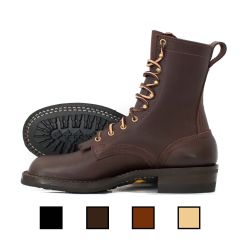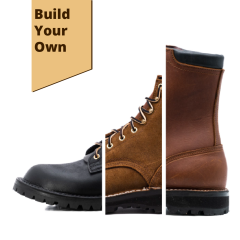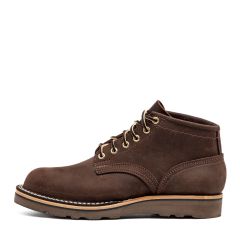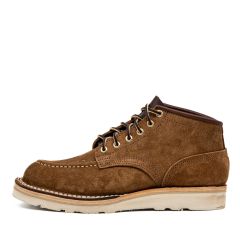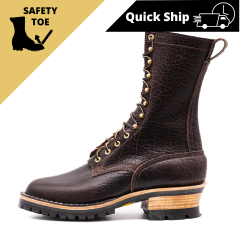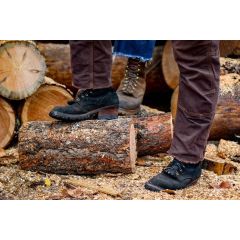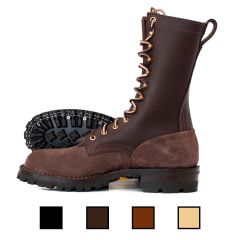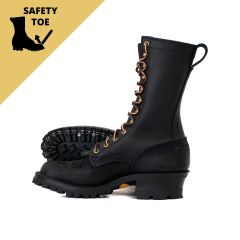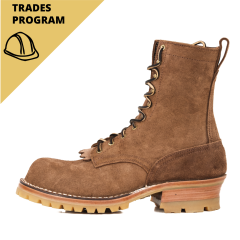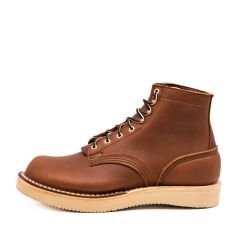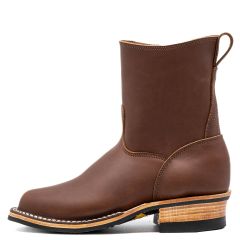Boots For Welding
Essential Features Of High-Quality Welding Boots
When selecting the best boots for welding, several key features distinguish high-quality options from the rest. These features enhance safety, comfort, and durability, ensuring that welders are protected and can perform their tasks efficiently.
Heat Resistance
When picking out welding boots, prioritize those crafted from heat-resistant materials like leather, which can endure high temperatures and prevent burns. These materials are designed to withstand the intense heat generated during welding tasks, safeguarding your feet from the common sparks and spatter in such environments. Moreover, heat-resistant boots will not degrade or melt easily, offering long-term protection and durability.
Metatarsal Guards
Boots equipped with metatarsal guards offer an added layer of protection for the top of your feet, shielding them from heavy falling objects and hot sparks. These guards are essential in environments where the risk of injuries from dropped tools or materials is high. By enveloping the upper foot and toe area, they distribute the impact over a larger area, minimizing injury and providing peace of mind while working.
Slip-Resistant Soles
Choosing boots with slip-resistant soles is crucial for maintaining stability in the often slippery and hazardous welding environments. These soles are engineered to provide better grip on wet or oily surfaces, reducing the risk of slips and falls that could lead to serious injuries. This feature is especially important in busy workshops where spills and slick surfaces are common.
Electrical Hazard Protection
For those working in areas where electrical hazards exist, selecting boots that are electrical hazard (EH) rated is vital. These boots are designed to provide a secondary level of protection against accidental contact with live electrical circuits, electrically energized conductors, parts, or apparatus, reducing the risk of electric shock. It's an essential safety feature for welders who may encounter electrical equipment or wiring in their workspaces.
Durability And Comfort
Lastly, the durability and comfort of your welding boots are key to enduring long hours on your feet. Look for boots that feature padded insoles for cushioning, arch support to prevent foot fatigue, and breathable materials to keep your feet dry and comfortable. Durable construction not only withstands the rigors of welding work but also ensures your investment lasts longer, while comfortable features allow you to focus on your work without distraction.
Materials Matter: Leather Welding Boots
- Leather Welding Boots Benefits: Leather, traditionally the material of choice for welding boots, is prized for its durability and natural resistance to sparks and minor splashes of molten metal. It not only provides excellent protection but also molds to the shape of the wearer's foot over time, enhancing comfort. Leather boots often incorporate additional elements like insulation for heat resistance and thick soles for protection from electrical hazards.
- Leather Welding Boots Considerations: However, they may require more maintenance to keep them in good condition and are typically heavier, which could be a drawback for some users. When deciding on leather welding boots, consider the specific hazards in your working environment, your need for comfort versus protection, and the longevity you expect from your boots. The best choice ultimately depends on your personal preferences and professional requirements.

The Role Of Comfort In Choosing Welding Boots
When it comes to choosing the right boots for welding, the focus is often on safety features – and rightfully so. However, the importance of comfort should not be underestimated. Welders spend long hours on their feet, often in challenging conditions, making comfort a crucial factor in their footwear choice. A pair of welding boots that offers a balance between safety and comfort can significantly impact a welder's productivity and overall job satisfaction.
- Ergonomic Design: A comfortable welding boot starts with an ergonomic design that supports the natural shape and movements of the foot. Look for features such as padded ankle collars, cushioned insoles, and flexible soles that can absorb shock. An ergonomic design helps to distribute weight evenly, reducing strain on the feet, ankles, and lower back.
- Breathability: Welding environments can be hot and stuffy, making breathability an essential feature for comfort. Boots made with breathable materials or equipped with moisture-wicking linings help keep feet cool and dry, reducing the risk of blisters and athlete's foot. Some boots also feature perforated sections or mesh panels for added airflow, providing a more comfortable experience in warm conditions.
- Correct Fit: Finding the correct fit is paramount for comfort. Boots that are too tight can restrict blood flow and cause discomfort, while those that are too loose may lead to chafing and instability. It's crucial to try on welding boots with the same socks you'll be wearing on the job, and to do so later in the day when feet are typically at their largest. Pay attention to both the length and width of the boot, and ensure there's enough room to wiggle your toes while also feeling secure around the heel and instep.
- Weight: The weight of the welding boots is another factor to consider. Heavier boots may offer more robust protection, but they can also become cumbersome over long periods, leading to fatigue. Advances in materials and design have made it possible to produce lightweight boots that still meet safety standards — a preferable option for those who value agility and comfort.
Why Durability Is Key For Welding Footwear
Durability is a cornerstone feature for any pair of Nicks Boots welding boots. Considering the harsh conditions and hazardous environments welders face daily, having boots that can stand the test of time isn't just a matter of cost-efficiency—it's crucial for ongoing safety and performance. Let's delve into the reasons why durability sits at the heart of great welding footwear.
Protection Against Hazards
Durable welding boots act as a frontline defense against common workplace hazards, including sharp objects, hot metals, chemical spills, and electric shocks. They're designed to offer comprehensive protection, ensuring that your feet stay safe from the various risks present in welding and industrial environments. By choosing boots with features like steel toes, metatarsal guards, and heat-resistant materials, you can safeguard your feet against injuries that can otherwise hinder your ability to work.
Longer Replacement Cycles
Investing in sturdy, well-made boots means they're likely to last significantly longer, saving you both money and the time you'd spend shopping for replacements. High-quality materials and construction minimize wear and tear, even under the harsh conditions of welding and industrial work. This durability not only makes financial sense but also ensures you always have reliable protection without frequent interruptions for boot replacement.
Sustained Comfort And Support
Durable boots don't just last longer; they also maintain their level of comfort and support over time. Quality boots are designed with ergonomic features, such as padded insoles, arch support, and proper fit, that help reduce foot fatigue and prevent injuries related to long-standing hours. Consistent comfort and support are crucial for maintaining high performance throughout the workday, allowing you to concentrate on your tasks without being distracted by discomfort.
Environmental Considerations
Choosing long-lasting boots contributes to environmental sustainability by reducing the need for frequent replacements, thereby cutting down on waste. When boots are built to last, fewer resources are consumed over time, and less waste ends up in landfills. By opting for durable footwear, you're making a choice that benefits not only you but also the planet, supporting a more sustainable approach to workwear.
Confidence In Every Step
Wearing reliable, durable boots provides a sense of confidence that's invaluable in demanding work environments. Knowing your feet are well-protected allows you to move freely and focus on your tasks without worrying about potential injuries. This confidence can lead to improved efficiency and effectiveness in your work, as you're able to concentrate on the job at hand, secure in the knowledge that your footwear won't let you down.
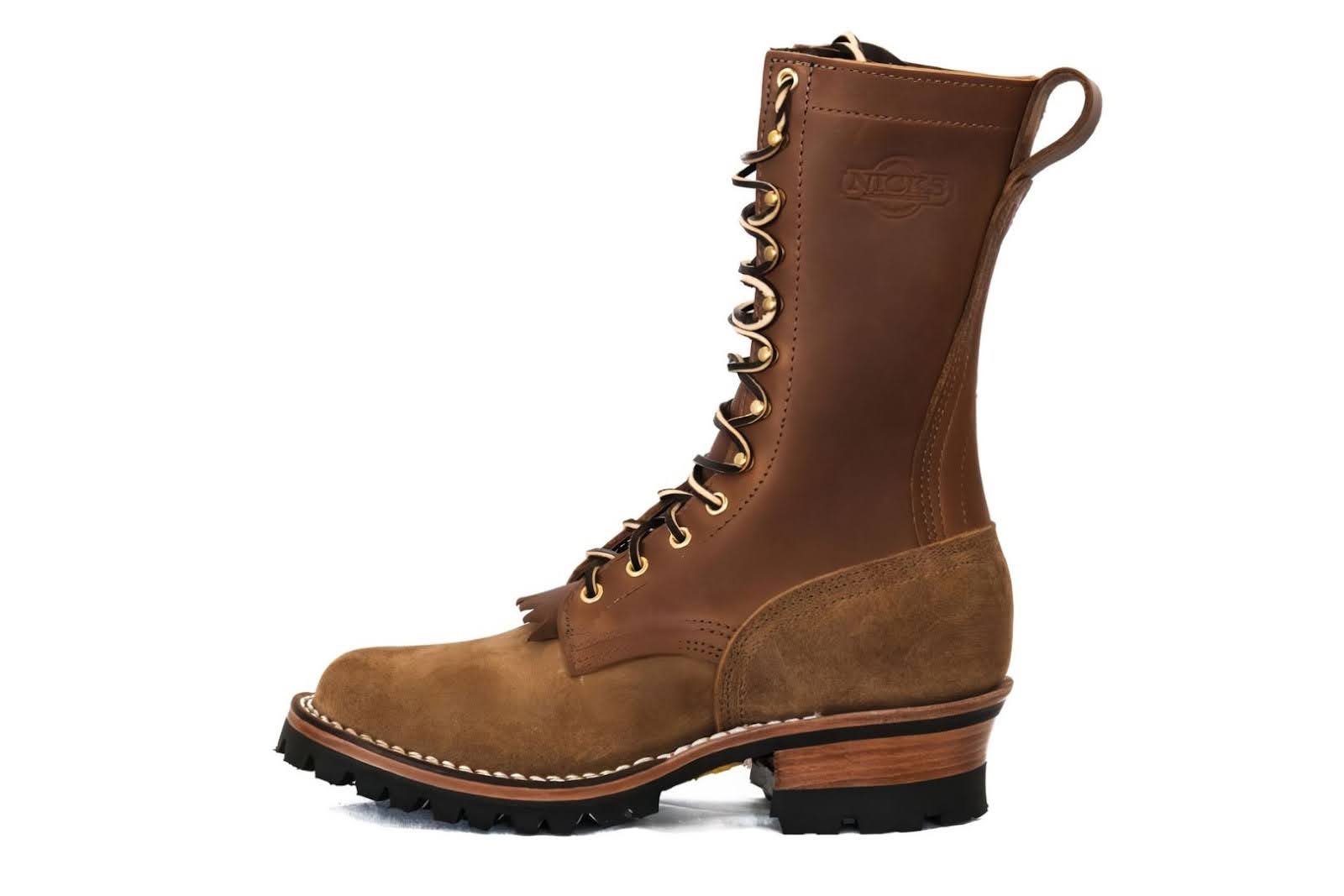
The Foundation Of Welding Safety And Efficiency
Selecting the right high-quality boots for welding is a foundational aspect of a welder's safety, comfort, and efficiency. High-quality welding boots that offer heat resistance, metatarsal guards, slip-resistant soles, and electrical hazard protection, among other features, are indispensable in safeguarding welders against the myriad hazards they encounter daily.
Furthermore, understanding the implications of material choice and the significance of adhering to safety standards, ensures that the boots you choose meet the highest protection criteria. However, beyond safety, the importance of comfort and durability cannot be overstated. Ergonomically designed, breathable, and correctly fitted boots that balance protection with day-long comfort enhance a welder's productivity and overall job satisfaction.
Meanwhile, opting for durable boots that withstand the rigors of welding tasks not only proves to be cost-effective over time but also contributes to sustained protection and performance. As you gear up for your next welding project, remember that the boots you wear are more than just accessories. They are your first line of defense against workplace hazards, a support system for your most demanding days, and a long-term investment in your craft.
Frequently Asked Questions
What are welding boots?
Welding boots are specialized footwear designed to protect welders' feet from the hazards associated with welding, including sparks, hot metal, and electrical contact. They are typically made from durable materials like leather and have protective features such as steel toes and metatarsal guards.
Why are welding boots important for safety?
Welding boots are critical for safety as they offer protection against burns from sparks and hot metal, punctures from sharp objects, slips and falls, and electrical hazards. The right pair of welding boots can significantly reduce the risk of foot injuries in the workplace.
How do welding boots protect your feet?
Welding boots protect your feet through several features: heat-resistant materials prevent burns, steel toes guard against impact and compression, slip-resistant soles prevent falls, and some models offer metatarsal guards for additional protection to the upper foot.
Can welding boots prevent electric shocks?
Yes, many welding boots are designed with electrical hazard protection. These boots have insulating properties that help protect the wearer from electrical shocks, making them an essential safety gear for welders who work with electricity.
How do I choose the right size for welding boots?
Choosing the right size for welding boots is similar to selecting any footwear. Ensure there's a little room at the toe for movement, but not so much that your foot slides around. Your heel should fit snugly without slipping. Always try boots on with the type of socks you intend to wear while welding.
What features should I look for in welding boots?
Look for welding boots made from durable, heat-resistant materials like leather, with protective features such as steel toes and metatarsal guards. Slip-resistant soles, electrical hazard protection, and water resistance are also beneficial. Comfort features like padding and support are essential for long wear.
Are there welding boots for women?
Yes, many manufacturers offer welding boots designed specifically for women. These boots cater to the size and shape of women's feet, providing both protection and comfort.
Can welding boots be used for other work environments besides welding?
While welding boots are designed specifically for the welding environment, their protective features make them suitable for various industrial, construction, and manufacturing settings where similar hazards exist.
How do I care for and maintain my welding boots?
Care for welding boots by regularly cleaning them with a soft brush or cloth to remove dirt and debris. Condition the leather to prevent it from drying out and cracking, and replace laces or insoles as needed. Store boots in a dry, cool place to prolong their life.
Why do welding boots have high tops?
Welding boots have high tops to provide additional protection to the ankles and lower legs. This design helps shield against sparks, hot metal, and other potential hazards encountered during welding operations, offering comprehensive safety coverage for the foot and lower leg.
